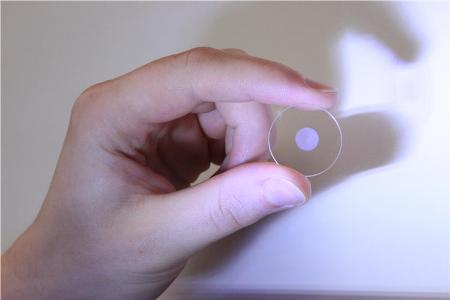A research team at the Optoelectronics Research Centre of the University of Southampton has designed nano-structured glass optical devices that can be used in optical manipulation.
The research team has published its findings in a research paper titled ‘Radially Polarized Optical Vortex Converter Created by Femtosecond Laser Nanostructuring of Glass’ in Applied Physics Letters. In the paper, the researchers described about the development of new monolithic glass space-variant polarization converters utilizing nano-structures.
 New monolithic glass space-variant polarization converter
New monolithic glass space-variant polarization converter
The tiny devices find applications in accurate laser material processing, table-top particle accelerators and optical controlling of atom-scale objects. They have also discovered that these devices can be further advanced to enable optical recording.
As per the research team, high-intensity, ultra-short laser pulses can be utilized to print three-dimensional pixel-like tiny dots known as voxels in glass. Its earlier study revealed that fixed-polarization lasers create voxels featuring a regular array of nanoscale planes.
The research team detected that by transmitting polarized light via such a voxel printed on silica glass, it propagates in a different way based on the orientation of light polarization. Its new polarization converter works based on this phenomenon called ‘form birefringence’. This method is compact and 20 folds cheaper than current microscopy methods.
According to Peter Kazansky, who led the research team, placing the compact device into an optical beam, produces the same result of an expensive liquid crystal-based spatial light modulator. The research team has further advanced the technology and customized it for a five - dimensional optical recording. It is now collaborating with Altechna, a Lithuanian company, to launch the technology to the market.